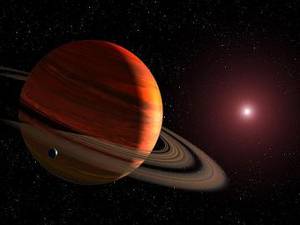Scott - Hello.
Chris - So, what is this all about?
Scott - Planetary scientists are getting very excited this week because a paper in the  journal Nature has announced the discovery of a dwarf planet candidate called- well, it is a very unexciting name - it's 2012 VP113. I'm told that the team who discover it refer to it as Biden after Joe Biden, the vice president or VP.
journal Nature has announced the discovery of a dwarf planet candidate called- well, it is a very unexciting name - it's 2012 VP113. I'm told that the team who discover it refer to it as Biden after Joe Biden, the vice president or VP.
Chris - What actually is it and how did they find it?
Scott - Well, they found it using a classic technique for looking for planets which is, you point a telescope at the sky and you watch for awhile and look for anything that moves. So, in fact, they use an instrument called the dark energy camera on a telescope in Chile and they took some observations over, I think one night in 2012. Hence, the 2012 in the name and spotted this thing moving over a period of a few hours. In fact, when they went back and looked at some old images of the sky, it had been seen in some images from 2011. But because they haven't seen it moving, they didn't know it was a potential ball of planet at that point.
Chris - Are they seeing a dark patch moving or are they seeing a light patch moving?
Scott - You see a light patch because it reflects the light from the sun.
Chris - How big is it?
Scott - I'm not entirely sure on this one. It's definitely smaller than the planet Pluto. As you may know in 2006, the planet Pluto was declassified as an actual planet. It's now called a dwarf planet. The reason for this is that Pluto doesn't have enough mass to have pulled in all the objects from its orbit. It hasn't done what's called clearing its orbit. It's simply too small for that. So, there are other objects called plutoids I believe which are found in the same orbit as Pluto. Now, the subject is I think about a 10th of the diameter of Pluto possibly, a 10th of the size. And so, it's also a lot further out than the planet Pluto.
Chris - Given that it is that far out, what are the implications then for the definition of our Solar System and also, for the model of how we think our Solar System formed and the way the planets that we didn't think we had before we've discovered this one and came to be?
Scott - Well, the definition of a Solar System is a bit of a contentious one which is great if you're an astronomer who likes to argue perhaps. There's a few different ways you could think about it. You could think that the edge of our Solar System is just defined by the furthest planet or the furthest dwarf planet we can see. But as we've seen this week, that's a definition that's constantly changing. You could also think of the edge of the Solar System as being defined by something called the Oort cloud which is a hypothetical cloud of objects - icy, rocky bodies lift over from when the Solar System formed. But we don't actually know if the Oort cloud is out there. This object plus another one which was discovered a few years ago called Sedna are possible signs that we've started to spot the edge of this Oort cloud around the edge of our Solar System.
Chris - So, why are scientists saying there could also be a monster, 10 times Earth-sized beasts lurking out there too.
Scott - This is because the eccentricity, so the shape of the orbits of these planets, they are very long and very oval. We expect planets to be roughly circular in their orbits around the sun. and so, the models we have for how the Solar System form aren't really explaining what these bodies are doing at here and why that it's got such an eccentric orbit, such an oval-shaped orbit. So, one of the theories for why that could happen is that they could've been scattered out of an orbit further inside the Solar System by a monster planet. That's one of the theories. I don't want you to think it's the only one. The more likely one is possibly that when the sun was forming, it was part of what's called a stellar nursery, many young stars all close to each other and that one of these stars somehow managed to scatter these objects out of the orbits around the sun.
Chris - Scott, thank you very much. Scott Thomas who's a Space Scientist from the University of Cambridge.
- Previous World Autism Awareness Day
- Next Black Box Recorders










Comments
Add a comment